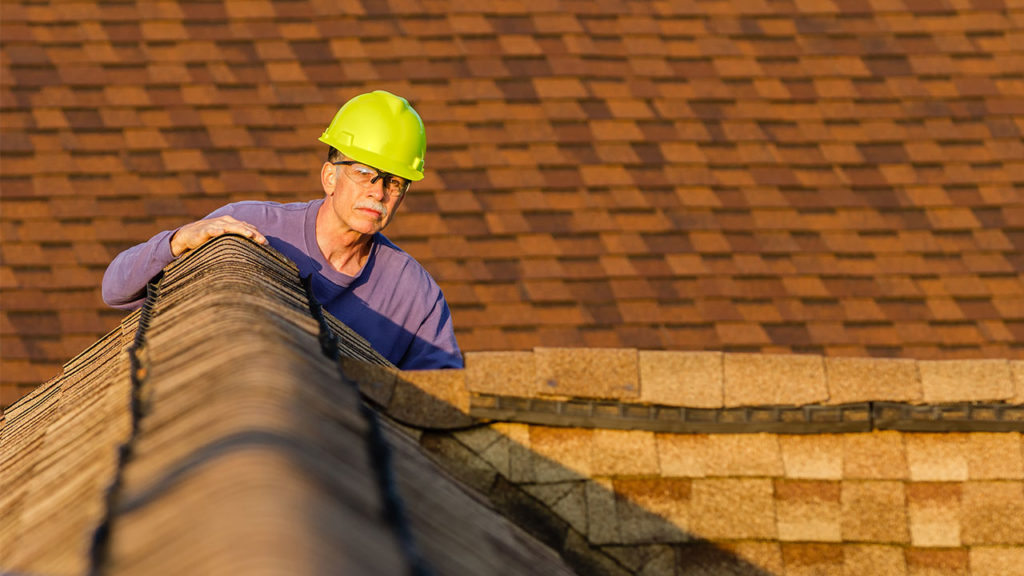The winters in Colorado can be harsh, especially for your roof. If your roof was in good shape before winter, you have less to worry about winter roof damage. However, if you had roof hail damage prior to winter, the wet heavy spring snow and ice can cause problems on a hail damage roof.
Snow Weight
Roof damage is common in the winter months because of the weight of wet snow. Wet snow is a lot heavier than dry fluffy snow. In terms of actual weight, six inches of wet snow is equivalent to 38 inches of dry snow. Living in Colorado, we all know that spring snow is heavy snow.
Each roof handles weight loads differently, and if too much snow accumulates on a hail-damaged roof, there is a chance it could collapse. If your roof does not have adequate drainage and it has sustained hail damage, it means the roof is over-stressed which can cause cracks, leaks, and a sagging ceiling inside your home or business.
Ice Dams
An ice dam is created when the warm air inside your home rises into the attic and warms the shingles on your roof. Snow that has accumulated on your roof will melt, and the water will take the path of least resistance to the roof edge where it re-freezes as ice. The ice gets thicker from all the melting snow, and as more snow melts, it gets backed up the roof and seeps under the shingles. When the backed-up water freezes and thaws, it works its way into any weakness in the roof, especially a hail-damaged roof.
Prevention

The best way to prevent an ice dam is to insulate and ventilate your attic and to clean out gutters and downspouts during the non-winter months. In the winter, use a roof rake to remove snow from the roof edges. Another option is a heat-enabled cable that sits in the gutters and melts the snow so it can drain.
There are snow roof rakes with extension poles that can be used to scrape the snow off your roof. You don’t want to have more than a foot of snow on your roof, so it’s a good idea to clear your roof after a major snowstorm. A roof rake is lightweight and has an extension pole up to 20 feet long.
Hail Damage on Roof
If you already have roof hail damage and you add the wet, heavy spring snow in Colorado, the freeze/thaw cycle can exacerbate any existing issues with loose or cracked shingles, detached flashing, or gutter seams with cracked caulking. In the Colorado climate, the cold/hot temperature swings cause contraction and expansion of all surfaces, including roofs.
Hail Damage Roof Inspection

It is never a good idea to climb on your roof in the winter. Leave that job to the Denver roofing contractors. Get a hail damage inspection near me after a Colorado hail storm to make sure your residential roof or commercial roof is healthy. The hail damage roof inspectors at Peak to Peak Roofing are ready to visit your home or business and provide a free roof inspection. Contact us today to schedule a visit with our Peak roofing professionals.

